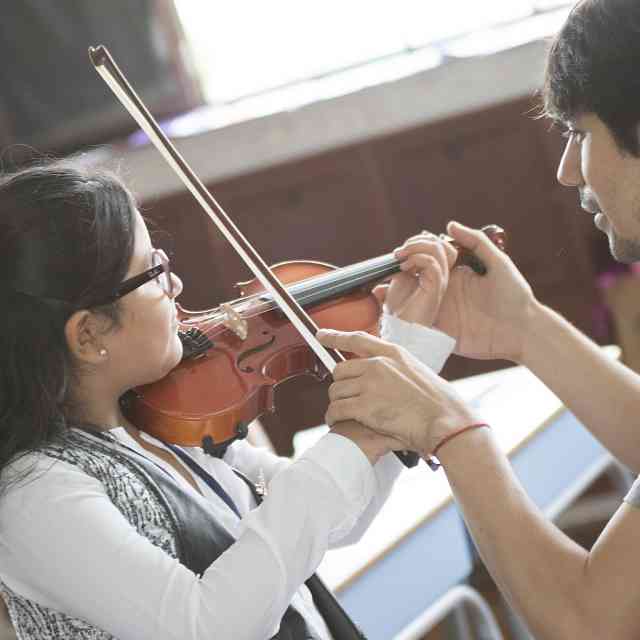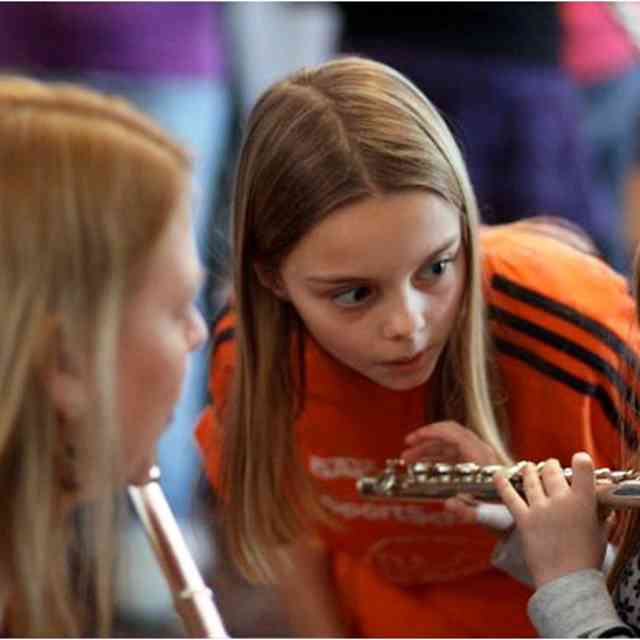I did a fair amount of running a few years ago, eventually working up to a couple of trail half-marathons. To prepare, I trained with friends almost every summer weekend on the race course outside of town—a beautiful, rugged narrow path that curved around an equally beautiful, narrow lake.
Running on it was very different from running on pavement; we had to slow down to manage the uneven ground, the rocks and tree roots and sharp curves. Once in a while, an entire tree or shallow stream blocked our path. I got strong, and the trail grew familiar—however, it never got easy. Even at my strongest, there were a couple hills I had to walk. In the moment, this felt like giving up. I had to remind myself that I was still moving forward, and that was what really mattered. We always ran again at the top. The truth is, walking the steep parts was probably what allowed us to finish the course.
This concept of changing pace to fit the circumstances is harder for me to remember as a parent. As a teacher, I know and expect that my students will not learn and develop steadily. As a violinist, I have learned to recognize my own hills and valleys—that there are times when learning seems to trudge steadily, times when it leaps forward, and times when it appears completely stagnant. When it comes to my own children, though, it gets more complicated. I want so much for them. I feel an enormous responsibility for how their lives turn out. And while I love and want to emulate Suzuki’s concept of “never hurry, never rest,” an unexpectedly slow pace can often look like no movement at all. It is a difficult thing to confront. I have more than a few times through the years had to step back and loosen my grip on my expectations. Walk the hills. Crawl them, even.
My kids are 16, 14, and 10—I am in the thick of parenting. I am wary of giving advice, but I can at least share what I see from this vantage point: some learning is underground: slow, deep, and long-term. On the surface a child might be resistant to practicing or struggling with a new skill, but there is always more going on below the surface, other lessons being learned that we can only guess at. The value of this kind of learning is not in how fast or obvious it is, and its nature may be hidden. Even if it is hard for me to see, though, I can choose to nurture it.
When we started our oldest on cello at an early age, he gave me absolute fits, because I could not get him to even bow at the beginning of a practice session. He was not a defiant kid, but he could not see the point of it, and could not be convinced. If we are supposed to start practice with a bow and cannot even do that, I remember thinking frantically, how is he going to learn anything at all? He did learn a little about playing an instrument, but he did not have access to group lessons or other young students, and family life was in a particularly hectic period. So we took a break from cello. Twelve years later, we are still on it.
On the surface a child might be resistant to practicing or struggling with a new skill, but there is always more going on below the surface, other lessons being learned that we can only guess at.
When it became clear that this break was happening whether I wanted it to or not, the guilt was enormous. How could I let my child miss out on something so important? I decided I could at least provide a rich musical environment for him. Some kind of Suzuki-lite. We borrowed DVDs of child-friendly operas and ballets from the library. We listened to Beethoven Lives Upstairs and every other CD from the Classical Kids collection I could find. My little boy started singing bits of famous arias while he was putting his socks on in the morning. We attended outdoor concerts and had music of all kinds playing in the background at home. We drove down the highway with Peter and the Wolf and Carnival of the Animals blaring, and I swear I saw other driver’s heads turn whenever the children brayed along with the violins in “Characters with Long Ears.” When his sisters started violin, our son took to singing the piano accompaniment for their pieces from the other room while they practiced. In fact, he sang all the time, even though he insisted he hated to sing. He went to every violin recital, passed out programs, took pictures, clapped for every kid who played. And then, in sixth grade a choir teacher got hold of him. Suddenly he loved to sing. Suddenly he did not hate music. Within a few years, in fact, he had dragged his father and me somewhat reluctantly through the process of applying to a fine arts boarding school so he could sing even more.
Please understand, this is a story half-told. Not even half, actually. It might look like he is on a straight clear path, but there are many things ahead for all of us: college applications and college itself, other competing interests, and lots of Who Knows What Else. All we know for sure is where he is at the moment, what he might have in front of him, and that music is a defining part of his life.
This is not a how-to story, either. It is only one story, and our son’s alone—one of an endless number of possible variations. What it tells me is that the only guarantee we have as parents is that our children’s stories are usually far more complicated than the straight-arrow plots we come up with in our heads. They’re also a lot more rich. Change, uncertainty—even wrong turns—will be there along with the golden moments. Remember our son’s violin-playing sisters? They both recently lobbied—hard—to quit. We are having them stick with it for the time being, for the same sorts of reasons we want them to stick with math and vegetables and tooth-brushing—also because they come home from orchestra sometimes with the music spilling out of them, regardless of whatever complaining they might have done on the way there.
A great work of art often challenges our expectations. It is helpful to remember this in considering our children.
There are two extremely important points to all this. First is that we, as parents, for as much as we know, have no idea how music lessons will play out in our children’s lives. We cannot even begin to guess, beyond the basics of things like discipline, appreciation of the arts, and the deepening of who we are as human beings—all the reasons we hopefully started out on this Suzuki journey—what role music study will play in our children’s lives. We can certainly stop wondering if all the time, energy, and money spent is worth it, because it is. How it is worth it, though, is not information we are privy to.
Second it is vital—vital—for us to understand that we are in this for the long game. Or the long race. Because of the first point.
Sometimes practicing/lessons/Book Two will be magical and loving and successful and you will feel like you have Arrived—thank goodness you stuck through that earlier hard stuff because now all is good. And sometimes—maybe three weeks after this, maybe a year or two later—you will wonder where you or your child or your teacher or the world failed, because we aren’t getting anywhere/this is just too hard/my kid hates practicing and I hate trying to make her practice. Sometimes school or life or family are simply in the way, sometimes we fall so far off the practice wagon we cannot even see it in the distance anymore.
We can certainly stop wondering if all the time, energy, and money spent is worth it, because it is. How it is worth it, though, is not information we are privy to.
I want to remind you that this is okay. It is part of the story. It is part of this work-of-art-in-human-form you and your child are creating.
A great work of art often challenges our expectations. It is helpful to remember this in considering our children. The older they get, the more they will take over the telling of their individual stories. This will require parents’ patience, our eyes, our ears. A fair amount of waiting. And the understanding that this struggle, this labyrinth, this holding pattern you find yourself in, is part of it—not the end of it. If you are walking the hills right now, or perhaps collapsed on one, convinced you will never get up, know that you are not alone. I am on one of those hills myself, and I have been on others in the past. Each one proves to me that my hopes and expectations are not the central thing. My kids are—their needs, their personalities, and ultimately the people they are becoming.
The sign at the head of the trail my friends and I trained on warns:
On this trail, you may experience:
Natural surface, dirt, mud, gravel, shifting rocks, slippery surface, etc.
Rocks, roots, and/or downed vegetation on the trail
Steep grades and inclines more than 10 percent
Bridges and/or structural crossings
Water/stream crossings without bridges
Often as a parent I feel like I am running through the woods at twilight. The only thing I’ve ever found to work well is to look at the path in front of me and decide the best way to take the next step. No matter how it should look, or used to look, or how far ahead I can see. All that matters is what is actually in front of me and how I respond. It is, after all, the middle of a rugged trail, and being on it at all counts for a lot. Along the way the scenery is beautiful, and there will probably be some really good stories to tell at the end.








